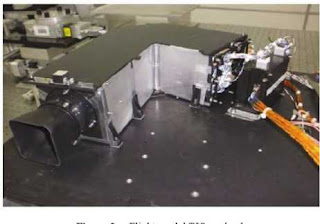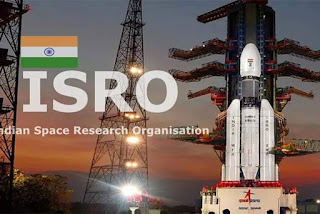# Process of inserted mangalyaan into mars orbit
The Indian scientists had prepared the mission in record 15 month and this mission was launched on 5 November 2013 by PSLV C25 rocket and successfully installed in earth orbit after launched a very tired and long journey started for scientists.
 |
| image source - google | images by - wikipedia |
Its orbit was extended in 4 stages in total and it was sent to the orbit of mars. A few days before mangalyaan enter to mars orbit and this was a very challenging time for ISRO scientist because when its main engine and thruster shutdown for 300 days, it had be started. Two days before it enter towards in mars orbit on 22 September 2014.
The 8 thrusters and its main engine were powered only for 4 second which was completely successful. And finally after 10 months of waiting and after travelling 67 Crore km mangalyaan enter orbit successfully. It took about 12 minutes 28 seconds for the signal to reach the earth. And the signal catch by NASA Canberro space centre and also send it ISRO is space centre on real time.
Soon after entering the orbit of mars it started circumambulation mars orbit. mangalyaan took about 70 hours 51 minutes to make one round of mars. As its furthest point is 80,000 km and its closest approach is take only 420 km above its surface.
India with the mangalyaan mission enter the mars of orbit. Our India has done what many developed countries of the world have not been able to do. So far, more space mission have been sent to mars than any planet. Many countries of the world have sent about 51 mission to mars, only of them 21 mission was successful. But the mangalyaan mission of india travelling a distance of 67 crore km where mangalyaan reached mars orbit in first attempt.
So far only European space agency, American space agency and Russian space agency enter in orbit of mars or reached on its surface but that to after many attempts. ISRO is mars orbiter is big as a nano car and total cost of the mission is only 450 crore and that makes it the cheapest interplanetary mission ever. Its average is only 4 km per rupee making it the record and the same MAVEN space craft sent to mars by NASA which costs 4700 crore.
The total weight of mangalyaan is 1350 kg only 5 instruments used in it.
 |
| mage source - google | images by -wikipedia |
➧The first and most important instrument is mars color camera which is a very sensitive electro -optical camera and capable of taking image of mars in different colors.
 |
| image source - google | images by- vision system design |
➧The second instrument is thermal infrared imaging spectrometer which is capable of detect the thermal emission temperature and hotspot on surface of mars.
➧The third instrument is methane sensor for mars Which is design to detect the atmosphere and methane gas on surface of mars |
| image source - google | images by- semantic scholar |
➧The fourth instrument is lyman alpha photometer which is a compact far ultra violet photometer and capable to study of exosphere of mars is detorium hydrogen ratio.
 |
| image source - google | images by-semantic scholar |
➧The fifth instrument is mars exospheric neutral composition analyzer which is designed to study the neutral composition of mars.
After entering the mars orbit. Mangalyan have six month to study and analyze the atmosphere and minerals of mars. And even today, this mission is working perfectly and periodically send many important information to the earth.
This mission was very important for the indian space research agency because it was the india is first interplanetary mission.













0 Comments
Hello, I'm Rahul and I am an engineer. I have shared the knowledge about the technology , games , gadget , etc . If you have any doubt . Please let me know .